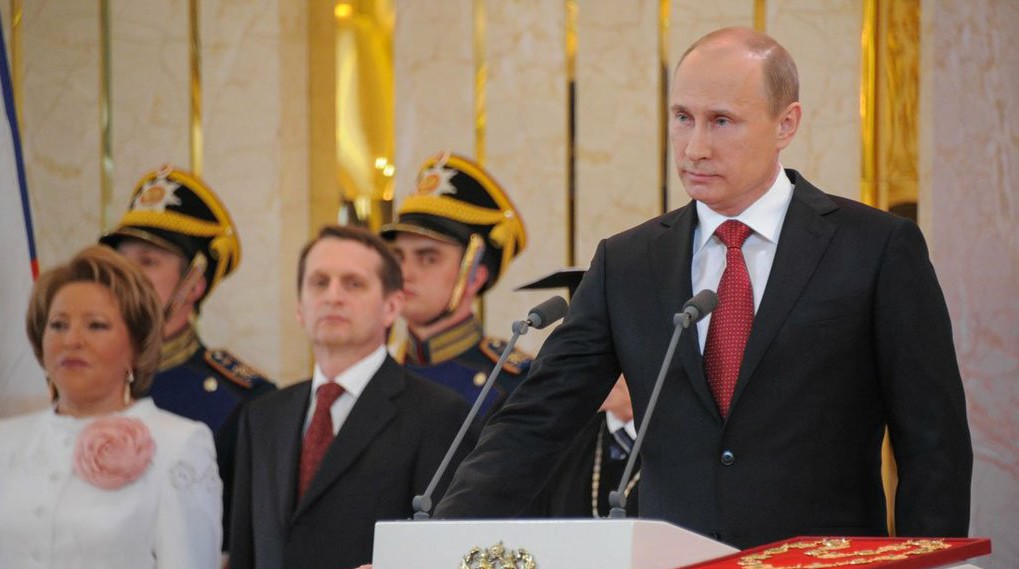I’m certainly a little late to the party on Ukraine news – leading up to Russia’s bold annexation of Crimea, Ukraine was gripped for months by violent protests after President Viktor Yanukovych pulled out of an association deal with the EU in November. By January Prime Minister Mykola Azarov resigned and President Yanukovych was hot on his heels, fleeing the country in late February. The world watched as deaths from violent rallies mounted and news spread about unidentified soldiers seized buildings and airports in Crimea. On March 1st, President Vladimir Putin received approval from parliament to use force in Ukraine to preserve Russian interests and on the 18th he signed a bill to absorb Crimea into the Russian Federation.
Putin hasn’t looked back since, despite EU condemnations and sanctions levied against key Russian and Ukrainian individuals by the United States and the EU. Old thoughts of competing spheres of influence and a Cold War stand off certainly come to mind and provoke questions about the future of American foreign policy in the region. But I’m interested in an aspect of the Crimea drama that hasn’t received much press time.
Putin publicly invoked the emerging human rights norm ‘R2P,’ as at least a partial justification for his interference in Crimea. R2P – or responsibility to protect – maintains that if a state fails to protect its nationals from severe human rights abuses including ethnic cleansing, war crimes, and crimes against humanity, the international community assumes the responsibility of protection. The doctrine breaks from a historic respect for Westphalian sovereignty and is seen by many as a response to the general lack of consensus of of the international community while handling horrific and widespread human rights violations in the late 20th century, including atrocities committed in Rwanda, Kosovo, Bosnia, and Somalia. The speaker of the Duma, Russia’s legislating body, stated that President Putin has been authorized to, “use all available means to protect the people of Crimea from tyranny and violence.”
So, though neither Russians nor Ukrainians are currently threatened by large scale human rights abuses – at its worst, ethnic Russians feel discriminated against because of use of the Russian language – Putin has justified strong-arming the geographically strategic region with protection for human rights. If this doesn’t make sense to you, you’re in the majority! Putin’s call to R2P has been widely dismissed as, ““an attempt to cloak aggressive action through the mantle of humanitarian intervention.” Not only are grievous human rights abuses not taking place, Ukraine is still capable of addressing such abuses if they were to occur, proving a lack of justification for the violation of Ukraine’s sovereignty. Additionally, many ethnic Russians comprise the pro-Ukraine protesters rallying for closer ties to the West.
This isn’t to say Russia is the first nation to manipulate R2P for the purposes of national interest. The United States’ and other western nations’ involvement in Libya in 2011 has become a supposed model for international intervention in sovereign countries for the purposes of protecting civilians. However, a report by Alan Kuperman calls to question the unadulterated human rights interest of the U.S. and NATO while assisting Libyan rebels to eventually overthrow the Gadhafi regime. Kuperman reports that intervention conclusively prolonged and extended the conflict; NATO didn’t encourage rebels to pursue a ceasefire, which would have limited civilian deaths. It was in the interest of the West to affect a regime change, which they succeeded in doing. However, by keeping alive the cause of the rebels, NATO prolonged the conflict, which inevitably resulted in higher civilian casualties.

Just a couple of problems to take note of here. If you want to assert that Putin’s R2P claims have been “widely dismissed,” then you have to show that–a link to one source of debateable quality is not sufficient. Also, if you think R2P is only about “grievous human rights abuses” then you’ve added a highly subjective element. Who gets to define what is grievous? Lastly, if you want a really extensive dissection of R2P in NATO’s war in Libya, see Professor Maximilian Forte’s book, Slouching Towards Sirte.